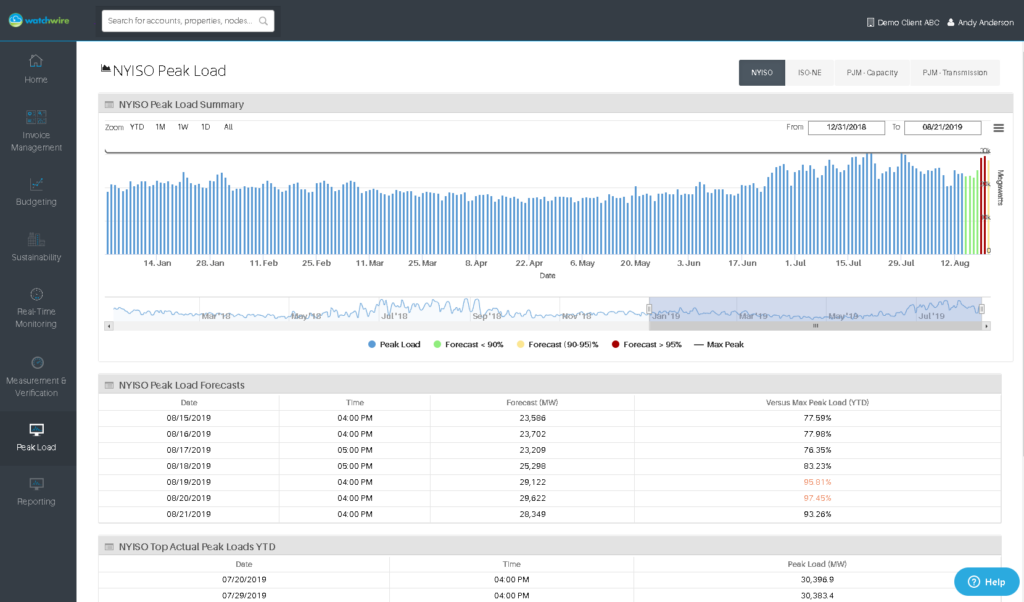Though mild thus far this week, temperatures in NYC are
expected to climb into the high 80s / low 90s next Monday and Tuesday. Current load forecasts place anticipated grid
load at about 96-97% of the current peak to date. You may want to hope we surpass the current
peak to date because for the first time in over 20 years, NYISO recorded a peak
hour on Saturday, July 20, 2019, between 4-5PM, at 30,397 MW. What happens if we don’t set a new peak and
the weekend peak holds up? Read on to
learn more.
Capacity tags are determined by each account’s demand during the grid’s single highest peak hour. This demand is then translated into a capacity tag that is effective the next year from May 1 – April 30. According to the New York Independent System Operator (NYISO), there is no restriction on what hour the coincidental peak may occur. The methodology for capacity obligation remains the same regardless of the day of the week. At first glance then, commercial accounts would likely have a significant decrease in their capacity obligation for 2020-2021.
Learn more about how capacity tags are calculated here.
Based off what we are researching, it’s unlikely the demand
recorded during a weekend hour will directly translate into an account’s ICAP
for the next capacity period. The
utility is ultimately responsible for assigning ICAP tags and there is a strong
chance the tags will be weather normalized and adjusted upwards with a Forecast
Trueup Factor (FTF). It would seem
improbable for Con Ed to place the capacity cost burden solely on residential customers
(who do not have ICAP tags) for that one hour of peak usage and not with
commercial and industrial accounts that contribute to more of the grid demand
the rest of the year. In the event a new
peak is not set in the next few weeks, we anticipate the utility grossing up
that weekend peak to reflect the account’s capacity obligation effective May 1,
2020. Unfortunately, this provides a lot
of discretion to Con Ed to dictate what your ICAP tag would have been on a
weekday, rather than using the actual next highest peak that actually occurred
on a weekday (which would more accurately reflect each account’s performance as
it relates to chasing the peak for ICAP reductions). As of 8/15, the weekday peak was Monday 7/29
between 4-5pm.
Reducing a building’s demand contribution during these peak hours can lead to hundreds of thousands of dollars worth of savings every year. Let watchwire help with peak load management by monitoring the grid’s consumption and weather in real-time and predicting when peak load hours are likely to occur through our predictive analytics platform. Reach out to EnergyWatch today to learn how cost-effective strategies can be implemented and properly tracked.
 Top Sustainability Trends to Watch in 2025
Top Sustainability Trends to Watch in 2025

 Log In
Log In








